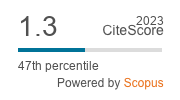Japan's new competitive advantage: the arguments and proposals for structural reorientation
DOI:
https://doi.org/10.2478/v10103-009-0033-4Abstract
As forecasted by the Japanese government, the country’s economy will grow, although slowly. This expectation is determined by the risk that the labour market situation and the worldwide business cycle will keep deteriorating. It is believed that the economy will not be spurred by exports growing as a result of worldwide recovery, but rather by a series of stabilization packages and gradually expanding domestic demand61. The expectations should be treated with a great deal of cautiousness, because of the highly unpredictable rate of unemployment, the concerns about deflation and the probability of the global recession turning out more serious than expected. According to the AFP (Gazeta Wyborcza of 08 Dec. 2009), in the third quarter of 2009 the Japanese economy finally showed some signs of recovery and reached positive values; unemployment also dropped from 5.3% to 5.1% between September and October. The widespread opinion is that the recovery is very fragile, as proved by the steadily falling prices, deflation, and the rising yen exchange rate (the highest in the last 14 years – 84 yen to 1 US dollar), threatening the Japanese exports.
Downloads
References
Asahi Shimbun (Asahi daily), 29 July 1999
Google Scholar
Drzymała A. (2008), Wybrane aspekty oddziaływania japońskich bezpośrednich inwestycji zagranicznych na japońską gospodarkę [in:] ‘Gospodarka w praktyce i teorii’, no. 2
Google Scholar
Funabashi H., Longevity of Corporations in Japan, [in:] proceedings from the conference Corporate Cultures. Universality and Differences, Akademia im. L. Koźmińskiego, 13-14 May 2009
Google Scholar
Gazeta Wyborcza daily of 08 Dec. 2009: Japonia ogłasza wart 81 mld dolarów pakiet stymulacyjny
Google Scholar
Key Points of the Japanese Economy, internal documents of the Economic Section of the Japan Embassy in Poland, 5 July 2009
Google Scholar
Kojima A. (2008), A New Development Model for Japan. Selected Essays, 2000-2008
Google Scholar
Koyama Y. (2006), Direct Investment of Japanese Companies in Poland and other Countries in Central and Eastern Europe and their Strategies, proceedings from the conference Corporate Cultures. Universality and Differences
Google Scholar
Kozuń-Cieślak G. (2006), Kapitał zagraniczny w Specjalnych Strefach Ekonomicznych, [in:] Kapitał zagraniczny w Polsce w dobie globalizacji, E. Freitag-Mika (ed.), Wydawnictwo Instytutu Technologii Eksploatacji, Radom
Google Scholar
JETRO (Japan External Trade Research Organization) internal documents, 2007
Google Scholar
Młodawska J. (2006), Reński model nadzoru koroporacyjnego w Niemczech i w Japonii - charakterystyka i perspektywy zmian, [in:] ‘Gospodarka w praktyce i teorii’, no. 2
Google Scholar
Młodawska J. (2008), Tradycja i współczesność-model nadzoru korporacyjnego [in:] Meandry japońskiej polityki, Marszałek-Kawa J. (ed.), Toruń
Google Scholar
Nihon Keizai Shimbun (Dziennik Gospodarki Japońskiej), January 2008
Google Scholar
Porter M., Takeuchi H., Sakakibara M. (2000), Can Japan Compete?, London
Google Scholar
Discussions with Yoji Koyama, professor emeritus at the University of Niigata, Japan
Google Scholar
The White Paper on International Trade 2001, METI (Ministry of Economy, Trade and Industry)
Google Scholar
The World Competitiveness Yearbook 2002, International Institute for Managment Development, 2002
Google Scholar
Downloads
Published
How to Cite
Issue
Section
License

This work is licensed under a Creative Commons Attribution-NonCommercial-NoDerivatives 4.0 International License.










